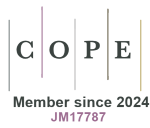Improving the diagnosis of X-linked hypophosphatemia: recommendations to optimize diagnostic flow and clinician/geneticist cooperation in the Italian clinical practice
DOI:
https://doi.org/10.33393/ao.2021.2235Keywords:
Genetic testing, Hypophosphatemic rickets, Patient care, PHEX, X-linked hypophosphatemia, XLH diagnosisAbstract
Objective: To provide Italian expert opinion-based practical recommendations to improve the cooperation between clinicians and geneticists in order to optimize diagnostic flow and care of X-linked hypophosphatemia (XLH).
Methods: A panel of four geneticists and four clinicians from Italian reference centers for the diagnosis and management of XLH met virtually, first to highlight the critical issues in patient care and then to identify and share proposals to improve the diagnostic and care path of XLH.
Results: Critical issues emerged regarding the transfer of adequate clinical information from clinicians to geneticists, standardization and clarity of genetic reporting, and adequate interactions between clinicians and geneticists during patients’ follow-up. The necessary requirements for an appropriate request for evaluation of genetic variants and the need for a clear and clinically useful genetic report were agreed upon. Specifically designed template forms to be adopted with appropriate adjustments were defined and are here proposed for both the clinician’s request and the geneticist’s report.
Conclusions: The expert group strongly believes that collaboration between clinicians and geneticists should be encouraged in XLH, not only in the diagnostic phase but also during a patient’s follow-up, in order to manage patients more comprehensively and effectively.
References
- Francis F, Strom TM, Hennig S, et al. Genomic organization of the human PEX gene mutated in X-linked dominant hypophosphatemic rickets. Genome Res. 1997;7(6):573-585. https://doi.org/10.1101/gr.7.6.573 PMID:9199930
- Lipman ML, Panda D, Bennett HP, et al. Cloning of human PEX cDNA. Expression, subcellular localization, and endopeptidase activity. J Biol Chem. 1998;273(22):13729-13737. https://doi.org/10.1074/jbc.273.22.13729 PMID:9593714
- Sabbagh Y, Boileau G, Campos M, Carmona AK, Tenenhouse HS. Structure and function of disease-causing missense mutations in the PHEX gene. J Clin Endocrinol Metab. 2003;88(5):2213-2222. https://doi.org/10.1210/jc.2002-021809 PMID:12727977
- Beck L, Soumounou Y, Martel J, et al. Pex/PEX tissue distribution and evidence for a deletion in the 3′ region of the Pex gene in X-linked hypophosphatemic mice. J Clin Invest. 1997;99(6):1200-1209. https://doi.org/10.1172/JCI119276 PMID:9077527
- Ruchon AF, Tenenhouse HS, Marcinkiewicz M, et al. Developmental expression and tissue distribution of Phex protein: effect of the Hyp mutation and relationship to bone markers. J Bone Miner Res. 2000;15(8):1440-1450. https://doi.org/10.1359/jbmr.2000.15.8.1440 PMID:10934642
- Beck-Nielsen SS, Mughal Z, Haffner D, et al. FGF23 and its role in X-linked hypophosphatemia-related morbidity. Orphanet J Rare Dis. 2019;14(1):58. https://doi.org/10.1186/s13023-019-1014-8 PMID:30808384
- Beck-Nielsen SS, Brock-Jacobsen B, Gram J, Brixen K, Jensen TK. Incidence and prevalence of nutritional and hereditary rickets in southern Denmark. Eur J Endocrinol. 2009;160(3):491-497. https://doi.org/10.1530/EJE-08-0818 PMID:19095780
- Beck-Nielsen SS, Brixen K, Gram J, Brusgaard K. Mutational analysis of PHEX, FGF23, DMP1, SLC34A3 and CLCN5 in patients with hypophosphatemic rickets. J Hum Genet. 2012;57(7):453-458. https://doi.org/10.1038/jhg.2012.56 PMID:22695891
- Rafaelsen S, Johansson S, Ræder H, Bjerknes R. Hereditary hypophosphatemia in Norway: a retrospective population-based study of genotypes, phenotypes, and treatment complications. Eur J Endocrinol. 2016;174(2):125-136. https://doi.org/10.1530/EJE-15-0515 PMID:26543054
- Feng JQ, Clinkenbeard EL, Yuan B, White KE, Drezner MK. Osteocyte regulation of phosphate homeostasis and bone mineralization underlies the pathophysiology of the heritable disorders of rickets and osteomalacia. Bone. 2013;54(2):213-221. https://doi.org/10.1016/j.bone.2013.01.046 PMID:23403405
- Carpenter TO, Imel EA, Holm IA, Jan de Beur SM, Insogna KL. A clinician’s guide to X-linked hypophosphatemia. J Bone Miner Res. 2011;26(7):1381-1388. https://doi.org/10.1002/jbmr.340 PMID:21538511
- Ruppe MD. X-linked hypophosphatemia. In: Adam MP, Ardinger HH, Pagon RA, et al, eds. GeneReviews®. [Internet] Seattle, WA: University of Washington, Seattle; 2012 Feb 9:1993-2020. [updated 2017 Apr 13]
- Thiele S, Werner R, Stubbe A, Hiort O, Hoeppner W. Validation of a next-generation sequencing (NGS) panel to improve the diagnosis of X-linked hypophosphataemia (XLH) and other genetic disorders of renal phosphate wasting. Eur J Endocrinol. 2020;183(5):497-504. https://doi.org/10.1530/EJE-20-0275 PMID:33107440
- Haffner D, Emma F, Eastwood DM, et al. Clinical practice recommendations for the diagnosis and management of X-linked hypophosphataemia. Nat Rev Nephrol. 2019;15(7):435-455. https://doi.org/10.1038/s41581-019-0152-5 PMID:31068690
- Endo I, Fukumoto S, Ozono K, et al. Clinical usefulness of measurement of fibroblast growth factor 23 (FGF23) in hypophosphatemic patients: proposal of diagnostic criteria using FGF23 measurement. Bone. 2008;42(6):1235-1239. https://doi.org/10.1016/j.bone.2008.02.014PMID:18396126
- Gaucher C, Walrant-Debray O, Nguyen TM, Esterle L, Garabédian M, Jehan F. PHEX analysis in 118 pedigrees reveals new genetic clues in hypophosphatemic rickets. Hum Genet. 2009;125(4):401-411. https://doi.org/10.1007/s00439-009-0631-z PMID:19219621
- Ruppe MD, Brosnan PG, Au KS, Tran PX, Dominguez BW, Northrup H. Mutational analysis of PHEX, FGF23 and DMP1 in a cohort of patients with hypophosphatemic rickets. Clin Endocrinol (Oxf). 2011;74(3):312-318. https://doi.org/10.1111/j.1365-2265.2010.03919.xPMID:21050253
- Morey M, Castro-Feijóo L, Barreiro J, et al. Genetic diagnosis of X-linked dominant hypophosphatemic rickets in a cohort study: tubular reabsorption of phosphate and 1,25(OH)2D serum levels are associated with PHEX mutation type. BMC Med Genet. 2011;12(1):116. https://doi.org/10.1186/1471-2350-12-116 PMID:21902834
- Carpenter TO, Whyte MP, Imel EA, et al. Burosumab therapy in children with X-linked hypophosphatemia. N Engl J Med. 2018;378(21):1987-1998. https://doi.org/10.1056/NEJMoa1714641 PMID:29791829
- Imel EA, White KE. Pharmacological management of X-linked hypophosphataemia. Br J Clin Pharmacol. 2019;85(6):1188-1198. https://doi.org/10.1111/bcp.13763 PMID:30207609
- Kearney HM, Thorland EC, Brown KK, Quintero-Rivera F, South ST; Working Group of the American College of Medical Genetics Laboratory Quality Assurance Committee. American College of Medical Genetics standards and guidelines for interpretation and reporting of postnatal constitutional copy number variants. Genet Med. 2011;13(7):680-685. https://doi.org/10.1097/GIM.0b013e3182217a3a PMID:21681106









